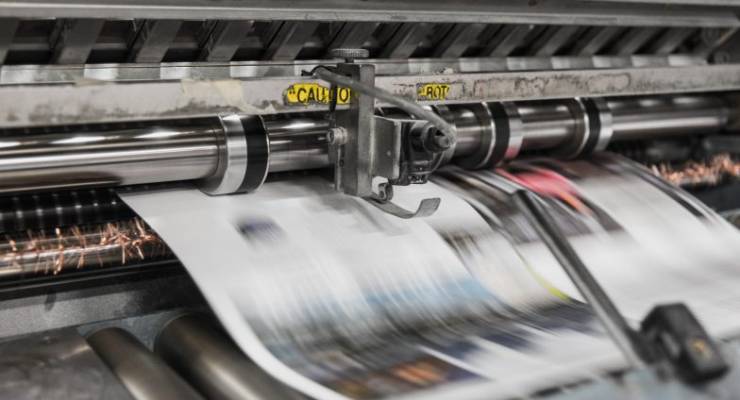
When the Covid-19 crisis ends, it’s likely that hundreds of communities across Australia will wake up without a newspaper.
That’s the expectation of Australian media researchers who say a true picture is emerging of the virus’s impact on regional media.
Crikey can reveal at least 152 community and regional newspapers across Australia have stopped printing in the last month, with many unlikely to restart.
This includes titles like the Lower Hunter Valley’s Maitland Mercury, which is 177 years old. The shutdowns amount to around a third of the total number of unique publications in Australia.
The number is based on estimates by the Media Entertainment and Arts Alliance (MEAA) and Public Interest Journalism Initiative (PIJI), which is mapping closures as they happen across the country.
Having survived the loss of classifieds, the introduction of the internet and countless corporate overtakings, it’s a pandemic that has ultimately spelled rural papers’ demise.
The announcements were easy to miss in last month’s sea of bad news. The first was family-run publisher Elliot Newspaper Group, which announced on March 23 it was standing down all staff at its four newspapers in Victoria’s north west, including at Mildura’s only daily newspaper, the Sunraysia Daily.
Then, on April 1, News Corp declared it would suspend sixty community and regional news titles, mostly around Melbourne and Sydney. That was quickly followed by Antony Catalano’s Australian Community Media (ACM) empire, which announced on April 14 it was freezing printing of the non-daily titles in its vast, formerly Fairfax-owned, regional media network until June.
The three announcements have gone some way in killing off legacy papers in Australia, with News and ACM controlling the bulk of regional and community news titles in the country.
The Elliot group has said it is committed to reviving its printed publications when the coronavirus crisis gripping Australia subsides. And Catalano told Crikey he had not technically closed any papers.
“The stand down is just a suspension. When ads come back, papers come back. I don’t want to close a single title if i can avoid it,” he said.
But, he added, it was pointless to revive a paper that was not commercially viable. “I’d love to bring back the steam train too but there’s no real demand.”
“If the readers are not there the readers are not there.”
ACM, which owns 160 newspapers around the country, said some titles would offer limited coverage online, and that the company’s 14 daily papers — including the Canberra Times — would continue to be published.
But while the closures are slated as temporary, it’s likely to be the final nail in the coffin for an industry that has endured decades of shrinking ad revenue.
“There’s deep concern that the cutbacks are irreversible,” said Allan Fels, former ACCC head and chairman of PIJI. “Newspapers which might otherwise be alive aren’t going to come back,” he said.
The closures leave swathes of the country with fewer reporters on the ground at a time when a health crisis rips through the country, leaving unemployment in its wake. Data collected by PIJI reveals some areas have been more impacted by closures than others, with clusters of shutdowns in NSW’s Hunter region, Victoria’s Gippsland region and Ceduna in South Australia.
Regional papers have been more heavily exposed to the virus than their metropolitan counterparts due to their heavy reliance on advertising from small local businesses, which have been gutted by the pandemic.
But the industry was already on its knees when COVID-19 arrived. The ACCC’s digital platform inquiry last year found that 21 local government areas in Australia have no local newspaper. And a Centre for Media Transition report revealed there were increasing pockets of the country, particularly in regional areas, that were no longer serviced by any local media outlets.
The Media Entertainment and Arts Alliance says a $50 million regional media bailout announced by the government is welcome but so far not forthcoming.
“Not a single cent has flowed to the regions where it is desperately needed,” MEAA director Neill Jones said.
“Local newspapers and local communities need to see that money being spent to support local newspapers immediately.”
Note: Eric Beecher, the chairman of Crikey publisher Private Media, the publisher of Crikey, is on the board of PIJI.








Why give these mostly right wing rags of bigotry one cent. The sooner they go broke the better. Nearly every regional town now has a new start up publication that is owned by locals and not Murdoch. With Lies Ltd out of the game – these new locally owned publications will prosper.
Agree.
Those local independents are dependent on local advertising too, Simon. They too, are doomed
As Tubbs & Eddie might say, local ads for local people.
Over 150yrs ago inland NSW supported a vast rail network – now the stations are tat shops.
Regional people have regional interests which are anathema to megacorps.
Local sales, events, hatching, matching & despatching and, not forgetting, NEWS!
I shall not weep for them.
With the corporate behemoths deserting them, the country towns will be back where they were in the 19thC – when local press arose and served a purpose.
Sounds good to me.
The comments above fill me with despair…
It’s sad that anyone would get pleasure out dancing on the graves of journalists, editors, writers, graphic artists and freelancers in small local areas… Astonishing too that anyone imagines something will replace ever them. Guess what, any publication not funded by a council, political party or a special interest group requires support from local advertisers. I was once involved in a local independent publication, and our arch enemy was a much bigger well-resourced one owned by News Corp. It too is now dead, surviving only a few brief years after we folded. We hated them with a vengeance as business competitors, but now I’m deeply saddened to see them go too as a result of Covid-19
I worry too, about the future of local democracy. No one reports on council politics or development issues like local papers, and now there’s just a yawning vacuum. That space will be filled only by the self-interested with agendas to push. Regional and local newspapers served their readers with a service way beyond anything the bigger metropolitan ones ever could – they were focussed, relevant and often 9to the locals, maybe outsiders didn’t see it) surprisingly entertaining. Few were “right wing propagandists” – sorry but that notion is pure ignorance.
Agreed.
Most of these commentators don’t know much about the regions.
The regional and rural newspapers will inevitably head to the same fate as capital city based print media. I live in a large regional town which has a twice weekly paper that only seems to be read by older people – going for a walk around town it is sad to note how many sodden and apparently unwanted papers are sticking out of the letterboxes.
The local paper in question only has a very limited web presence and doesn’t even list its classifieds – the once hefty real estate and cars for sale sections long lost to online competitors. It is irrelevant to young people, who access whatever news they need in seconds on their mobiles.